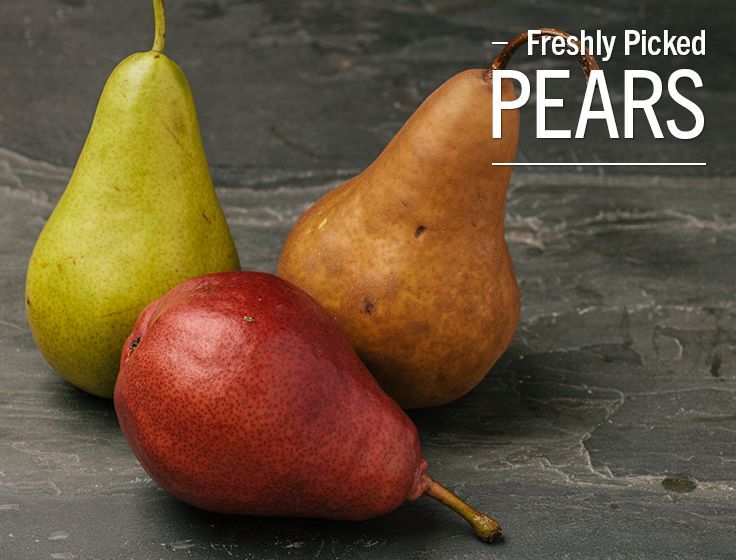How to choose the perfect pear
This time of year, we can’t get enough of sweet, juicy pears! They’re one of our favorite fall and winter fruits and come in a variety of colors, including green, red, yellow and brown. Pears are members of the rose family, which also includes apples, apricots, cherries, peaches, plums, raspberries, strawberries and almonds.
There are over 3,000 known pear varieties in the world, but only a handful are grown here in the United States. Perhaps the most commonly known pear is the Bartlett pear, which turns from bright green to golden yellow as it ripens. This is also the type of pear most often canned. Other varieties include Red Bartlett, Green Anjou, Red Anjou and Bosc.
Pears are a good source of dietary fiber, vitamin C and vitamin K. Pear skin contains anti-inflammatory flavonoids. The skin also contains about half of the pear’s total dietary fiber. Eating a variety of fruits and vegetables, including pears, may also reduce the risk of heart disease, type 2 diabetes and certain cancers.
When choosing pears, look for ones that are firm, but not too hard, with a smooth skin that is free of bruises. Some brown speckled patches are normal – in fact, they may indicate a pear with more intense flavor.
To tell if your pear is ripe, press gently near the stem. If that spot gives in to pressure without being mushy, your pear is ripe and ready to eat! To ripen pears quickly, put them in a paper bag at room temperature; they will emit gases that speed up the ripening process.
Pears also tend to absorb smells, so store them away from your garlic!
Besides being eaten whole as a snack, pears can be used in desserts, sauces, salads and more. Head over to Pinterest to check out our collection of pear recipes or check out our pear guide for more serving suggestions.






